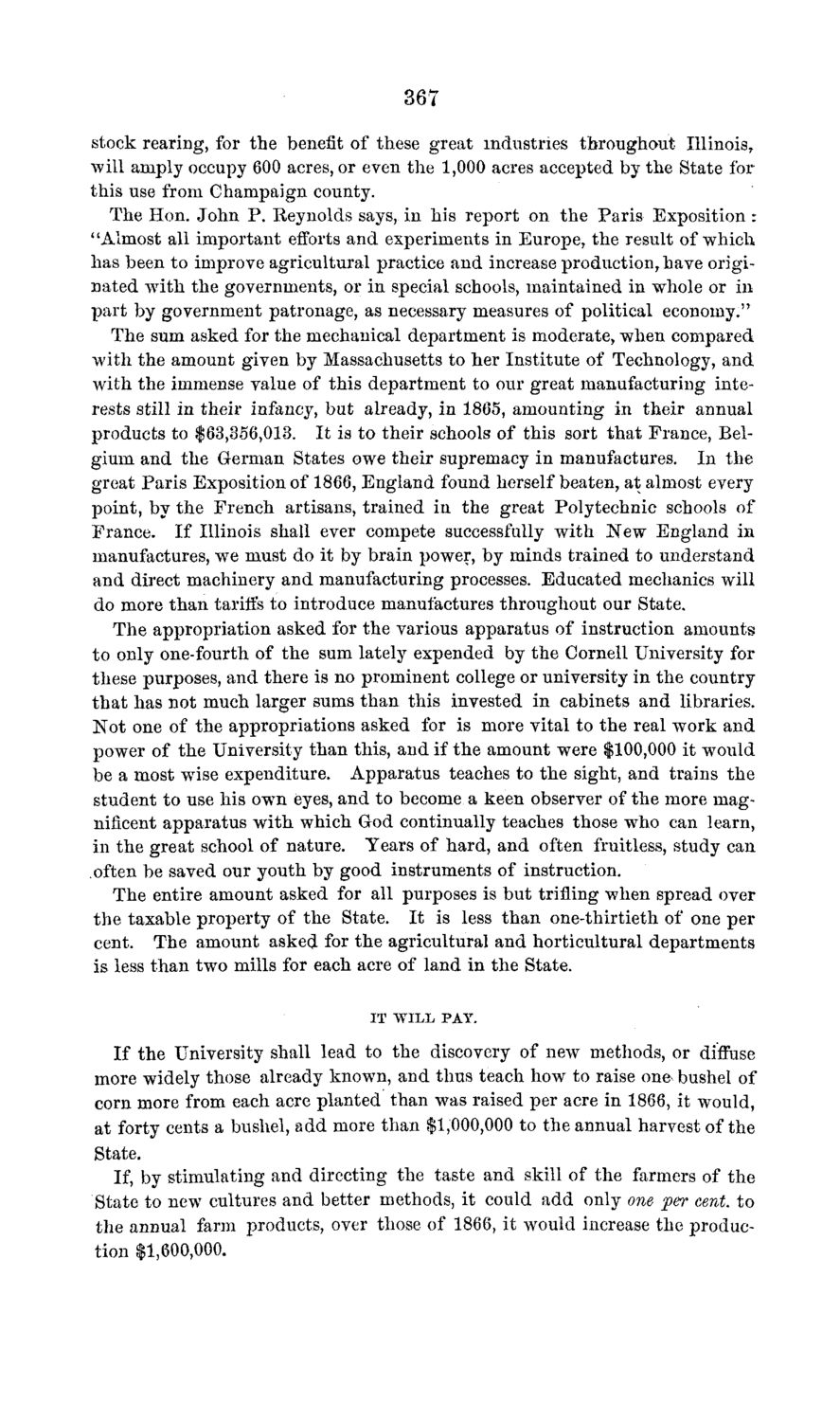| |
| |
Caption: Board of Trustees Minutes - 1869
This is a reduced-resolution page image for fast online browsing.

EXTRACTED TEXT FROM PAGE:
367 stock rearing, for the benefit of these great industries throughout Illinois^ will amply occupy 600 acres, or even the 1,000 acres accepted by the State for this use from Champaign county. The Hon. John P. Reynolds says, in his report on the Paris Exposition: "Almost all important efforts and experiments in Europe, the result of which has been to improve agricultural practice and increase production, have originated with the governments, or in special schools, maintained in whole or in part by government patronage, as necessary measures of political economy." The sum asked for the mechanical department is moderate, when compared with the amount given by Massachusetts to her Institute of Technology, and with the immense value of this department to our great manufacturing interests still in their infancy, but already, in 1865, amounting in their annual products to $63,356,013. It is to their schools of this sort that France, Belgium and the German States owe their supremacy in manufactures. In the great Paris Exposition of 1866, England found herself beaten, at almost every point, by the French artisans, trained in the great Polytechnic schools of France. If Illinois shall ever compete successfully with New England in manufactures, we must do it by brain power, by minds trained to understand and direct machinery and manufacturing processes. Educated mechanics will do more than tariffs to introduce manufactures throughout our State. The appropriation asked for the various apparatus of instruction amounts to only one-fourth of the sum lately expended by the Cornell University for these purposes, and there is no prominent college or university in the country that has not much larger sums than this invested in cabinets and libraries. Not one of the appropriations asked for is more vital to the real work and power of the University than this, and if the amount were $100,000 it would be a most wise expenditure. Apparatus teaches to the sight, and trains the student to use his owrn eyes, and to become a keen observer of the more magnificent apparatus with which God continually teaches those who can learn, in the great school of nature. Years of hard, and often fruitless, study can often be saved our youth by good instruments of instruction. The entire amount asked for all purposes is but trifling when spread over the taxable property of the State. It is less than one-thirtieth of one per cent. The amount asked for the agricultural and horticultural departments is less than two mills for each acre of land in the State. IT WTILL PAY. If the University shall lead to the discovery of new methods, or diffuse more widely those already known, and thus teach how to raise one bushel of corn more from each acre planted than was raised per acre in 1866, it would, at forty cents a bushel, add more than $1,000,000 to the annual harvest of the State. If, by stimulating and directing the taste and skill of the farmers of the State to new cultures and better methods, it could add only one per cent, to the annual farm products, over those of 1866, it would increase the production $1,600,000.
| |